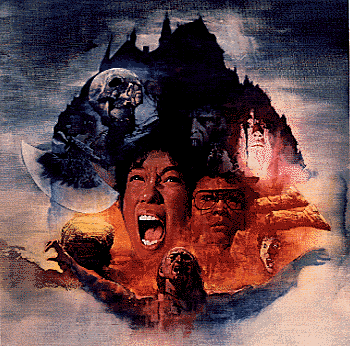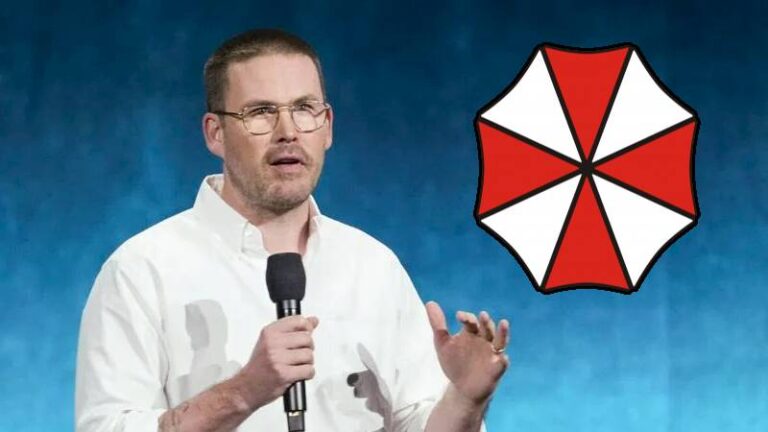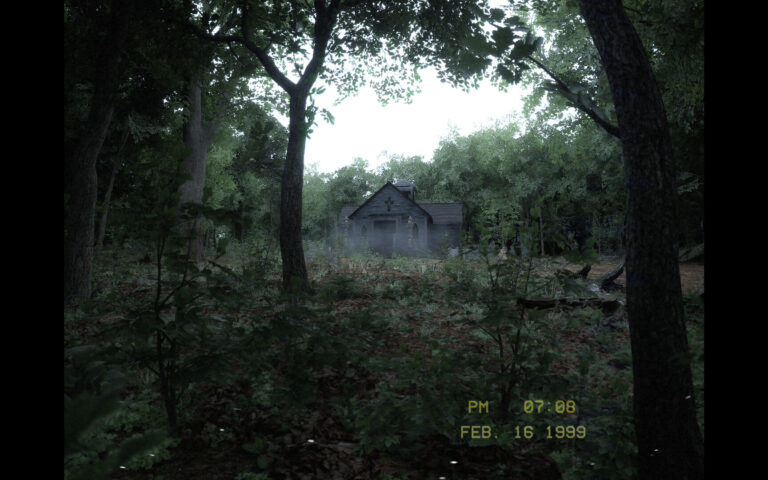
It’s been 15 years since the release of the original Resident Evil on Sony’s first home console, the Playstation. Inspired by the Famicom title, Sweet Home, Resident Evil pit players in the role of either Chris Redfield or Jill Valentine. It was just you, a huge mansion full of traps and puzzles, and zombies…a lot of them. Upon completing the dread-filled scenario players found themselves being part of history in the making, back in 1996, for they had just fully witnessed the birth of survival-horror as we know it today.
It’s not absurd to state that Resident Evil is the reason why we have the modern survival-horror franchises we have today; from Silent Hill to Dead Space. But how Resident Evil itself get conceived? What was going through the series’ father Shinji Mikami when he decided to take on this project for Capcom? Well, we’ll have to visit home Sweet Home for that.

As aforementioned, Shinji Mikami was heavily inspired by the Famicom title Sweet Home, which was a video game adaptation of a film of the same name, when he went to develop the first Resident Evil game. There are many similarities between the Famicom and PS1 titles as well. Both are set in a huge mansion full of lurking horrors trying to cut the player’s life short. Both also involved an investigation of sorts.
In Sweet Home the player was pitted in a deserted mansion once belonging to the deceased Ichiro Mamiya with the mission of taking photographs of the estate and retrieving his cherished frescoes. This was easier said than done, though, and while the former owner was long gone this didn’t mean that this group of 5 people were left to roam about the mansion in isolation. The estate was haunted by Ichiro’s wife, Lady Mamiya and many nightmarish creatures. Survival was the key in Sweet Home and we see that yet again when Resident Evil released on the Playstation on March 22, 1996.

The concept of the game was very much alike to that of Sweet Home. You had the S.T.A.R.S sending in their Alpha team to investigate the whereabouts of the Bravo team. The Alpha team flies out to the outskirts of Raccon City, the Arklay Mountains and it’s here where their investigation starts going to hell. Not only have they lost contact with Bravo team, but now we have deceased members being found from the unit. Soon after, Alpha member Joseph Frost becomes a victim himself, when he’s eaten alive by the ravaging cerberus BOW. The unit’s pilot Brad Vickers deems the situation too much to handle and decides to abort, leaving Chris, Jill, Barry, and Wesker to make a run for the nearby mansion anticipating a source of shelter. The rest is, as they say, history.
Being inspired by Sweet Home, Mikami actually implemented a lot of elements from said game. The most obvious element is having a team go into a mansion, only to discover unthinkable horrors with its confines from what just supposed to a simple investigation. But we also see the aspect of art from Sweet Home throughout the Spencer Estate in Resident Evil. While not frescoes like in Sweet Home, there are many works of art scattered around the mansion’s halls and rooms. Puzzles even revolve around these forms of art sometimes. It’s a theme that has transitioned nicely into the Resident Evil franchise as a whole, save for the most recent entries where puzzles aren’t really common.
Putting these similarities aside, Resident Evil went on to become its own beast and provided a lot of memorable moments that has stuck in the minds of survival-horror enthusiasts to this day.

Right from the beginning of the game where players, taking the role of either Chris Redfield or Jill Valentine, encountered the first zombie, one had a strong sense of the hellish ride they were about to embark on. That moment itself proved to be quite a scare for players, especially at a time where zombies weren’t as exploited in entertainment as they are now.
As you delved deeper into George Trevor’s architecture you faced even more zombies, hordes of them. They weren’t the only ones roaming the mansion, though, and players soon met new faces that would go on to become well-known entries in the franchise’s rogues gallery like the Cerberus BOW and the Hunter. But what could be worse than having to constantly aim for survival in the midst of multiple enemies trying to kill you?: The inclusion of clever puzzles and traps to complement the bare horror presented by the atmosphere itself.
Traversing the mansion wasn’t as straight-forward as one would imagine; and such an act required going through multiple traps and puzzles while finding the right keys for the situation. Another form of puzzle in and of itself was the aspect of managing one’s inventory. Both Chris and Jill had ups and downs to their characters, with the inventory being one such thing. Choosing Chris meant you had fewer slots to occupy with necessary items such as keys, ammo, and health. Hell, Chris himself didn’t even start the game out with a gun as opposed to Jill. So right away you know that Chris’ scenario presents a much more harder challenge. Basically, the point one should take is that in this game your inventory, and the way you managed it, was crucial to surviving the many horrors you would come to face.
All of this, was of course wrapped in some very B-Movie dialogue and method of story-telling. There’s no denying that Resident Evil wasn’t trying to break any new-ground with its story-telling, but there’s also no denying the fact that while the dialogue may have been served with a big dose of cheese it still proved to offer a lot of memorable lines, especially from the Chuck Norris of gaming: Barry Burton (Serving Jill sandwiches since 96′).
Another memorable aspect of this game’s story-telling was the live-action intro that graced the the debut of the franchise, never to be tagged to an entry since, unless you count the live-action commercial for Resident Evil 2 or the viral videos for Resident Evil 5. It was quite simple something different for the console and it did a good job of getting the point across in terms of what to expect. The one downside was that upon the game’s release outside of Japan the intro got censored into a black and white version that also took away some of the gory bits with Jack Frost and the dogs. Regardless, this intro (full of forced acting) served to add to the overall experience of the game and one can’t help but hope for another such intro for a future entry in the franchise (with some updated dialogue antics, of course).
But what was the one thing that made the original Resident Evil such a memorable experience? Sure you had the classic B.O.W’s and their hellish antics and you also had brain-twisting puzzles that slowed down the pace to make you use your brain to survive. The one aspect that tied everything together perfectly was the atmosphere.

The Spencer Estate since the time of its conception has become one of the most recognized settings in all of gaming with the main hall being the focal point of recognition. We’ve even seen throwbacks to the mansion recently with the release of the Lost in Nightmares DLC for Resident Evil 5. There was also a replica of Spencer’s mansion in Resident Evil: Code Veronica that definitely did a good job in bringing players back to that mindset they had while traversing the original years ago. 15 years later and we’re once again going to see another rendition of that main hall in the upcoming Nintendo 3DS exclusive: Resident Evil: Revelations. This is just one of the key aspects of the game’s atmosphere.
The mansion itself was just full of memorable components. From the most obvious, like zombies, to the more disturbing like the scattered notes and journal entries you’d find as you traversed deeper into the mansion. Ranging from the one that inspired this article’s title to the one where a scientist is showing complete emotion on a written page to this loved one in his final hours. There’s a lot that was put into the game’s back-story that served to enhance the overall atmosphere.
It didn’t end in the mansion either, all these elements that made the atmosphere extremely effective carried over to the other locales the game presented. The residence with it’s roaming zombies and giant spider BOWs to the classic laboratory setting where you really get the sense that something horrible has occurred. And of course, Tyrant’s chamber where you do battle with the first major boss battle in Resident Evil history. The same care that Capcom put towards developing the initial mansion locale applied itself seamlessly into the proceeding environments; which of course kept the player truly immersed and dreadful at the thought of what may be around the next corner or at the end of the hall.
While Resident Evil had an immediate impact on those who played it back in 96 (or those playing it now for the first time) you also have to take into consideration the impact that followed, which affected the entire genre leading to what it is today.

If it weren’t for Resident Evil then we honestly may not have the franchises we take for granted today. Let’s make an example out of Dead Space’s initial setting to prove this. The Ishimura was pretty much a horror-filled mansion in outer space. Visceral put players in very confined areas akin to the ones players were pit in throughout the original Resident Evil. Dead Space 2 even took a page out of Resident Evil’s book, once more, by once again implementing the original game’s locale into a chapter that made players remember the not so distant past where they were taking out hordes of nNcromorphs for the first time aboard the Ishimura.
Then of course we have the evolution the franchise saw with the release of Resident Evil 4. While we won’t delve too much into this whole notion in this article (you can expect this topic to rear its head soon) we will state how Resident Evil 4 once again made a revolution in the genre like the original Resident Evil did all those years ago. Leon Kennedy’s second adventure brought a new camera perspective, where the player would get an over the shoulder view to get a better view of what’s in front of you. This mechanic has been used almost religiously since then when you look at not only survival-horror titles, but other third person shooters as well; most notable: the Gears of War franchise.
The original mansion incident is something we’ll never forget. The virus outbreak that led the Spencer Estate becoming the home of the living dead is something we truly appreciate for it led to the creation of a franchise that is not only the father of mainstream survival-horror, but also one of the finest franchises in the history of gaming. Happy Birthday Resident Evil, you’ve given us 15 years of pure excitement through horror. Whether it be the classic sense of survival-horror or the more recent forays into action-horror territory. Let’s all stop complaining about how Resident Evil 5 didn’t feel like Resident Evil and instead let us appreciate the franchise as a whole. All those characters we’ve grown to love throughout these 15 years, all the scenarios we’ve gone through, the conspiracies we’ve taken part in; these memories will be with us for the rest of our lives. Here’s looking at another 15 years of horror.




